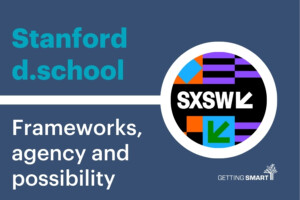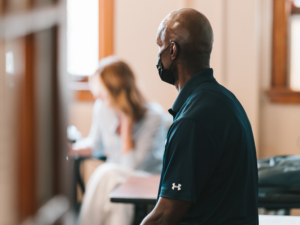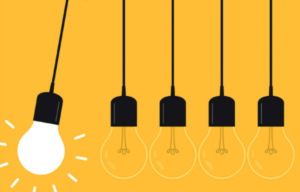Asking Kids to Dream–And Bringing Dreams to Life

The premise is simple: ask kids what their dream machine would do and then help them build it.
It started with a little boy named Oskar who wanted a machine to dig for Roman treasure. He made a drawing and wrote a user manual. His father, a philosopher, wasn’t very handy but didn’t dismiss his request. They went to a technical school and talked to engineers. And soon, MyMachine was born.
Founded 10 years ago in Flanders (the Dutch-speaking part of), Belgium by Piet Grymonprez from Howest University, Jan Despiegelaere of the Community Foundation of West-Flanders, and Filip Meuris of the community development organization Leiedal, the nonprofit MyMachine Global Foundation began offering thousands of Belgian children the opportunity to dream.

An interesting formula emerged as MyMachine scaled: elementary students are asked to describe their dream machine, college design students and high school prototypers help bring to life the dreams of elementary students.
The founders love to recount a few of their favorite machines: one that fights boredom, one that provides compliments, a turning bunk bed, an elaborate homework delivery machine, and a Belgium fries shooting machine (don’t try calling them French fries while in Belgium). Some are serious while others are silly–it’s about the process, the journey and learning.
Grymonprez, who serves as Managing Director, said, “We created MyMachine because we want more creativity in the education system.”
When asked about their dream machine, “Kids answer with what is important to them at that time,” said Grymonprez. The prompt can be an important window into a child’s life.
This interdisciplinary approach adds a unique collaboration of all levels of education and creates a free haven of creativity inside the education system, “a free haven of joy and wonder,” added Meuris.
“The higher education students benefit from seeing through the eyes of children,” said Grymonprez. “They realized that we tend to lose the ability to be really creative,” he added.
The Link Between Creativity and Economics
“The technology industry in Flanders is a key driver for the economy,” said Peter Demuynck who directs Agoria Flanders, advocates for the tech ecosystem. “The companies are in need of young, skilled and creative talents. From the kinds that are not afraid of taking on groundbreaking ideas and turn them into tangible new products and services.”
“MyMachine is creativity, entrepreneurship, and STEAM” added Grymonprez. “These are the skills to bring innovative ideas to life.”
Students “learn that every idea matters if you want to contribute to innovation,” added Demuynck, “And they learn to do so through collaboration and by respecting each other’s talents. Exactly like they will need to to do in their future jobs.”
“My Machine combines different aspects of entrepreneurship like creativity, motivation and taking initiative,” said Bernard De Potter, administrator of the Flemish Agency of Innovation and Entrepreneurship. “But the most valuable aspect is that children and students learn through experience and concrete activity: from the idea of a dream machine of children in primary schools, over the concept of students in higher education towards the real machine built by students in secondary education. The perfect way to support that innovative and entrepreneurial spirit, by which we hope that these children and their environment grow up with a positive attitude towards innovation and entrepreneurship.”
As MyMachine expanded across Belgium with a combination of philanthropic and government support, the nonprofit started a franchise system that allows other regions to launch a MyMachine chapter. Global chapters are in far flung places including Slovenia, Slovakia, Norway, Portugal, South Africa, and Oklahoma City.
MyMachine was recognized with the United Nations World Summit Award. Supporters of the program appreciate the creativity, design, and entrepreneurship that it fosters.
The founders most appreciate the sense of agency that elementary students gain as they see older students work on their designs. They also appreciate the empathy that college students learn and the creativity that is reignited while working with children.
“You can be part of a bigger movement, a movement that changes the world,” said Meuris who has seen the life changing impact of the program on his own son and his friends who are now studying product design in college.
“We should not be consumers of what’s going on, said Meuris, “We should be active motivated engaged people. We’ve never met three people that more exemplify that sentiment than the founders of MyMachine.
For more see:
- Teaching Students How to Bring Their Dreams to Life
- Design-Focused University–The Best Thing Since French Fries (Which Are Also Belgian)
- Samsung Creativity Lab–And What it Means for Education
This post was originally published on Forbes.
Stay in-the-know with all things edtech and innovations in learning by signing up to receive the weekly Smart Update.






Patti Shade
Children’s creativity doesn’t flourish by happenstance. It’s a perishable skill that must be nurtured and developed. We need more “Dream Machine” programs - “free havens of creativity inside the education system, free havens of joy and wonder.” What an inspirational way to describe an educational program.